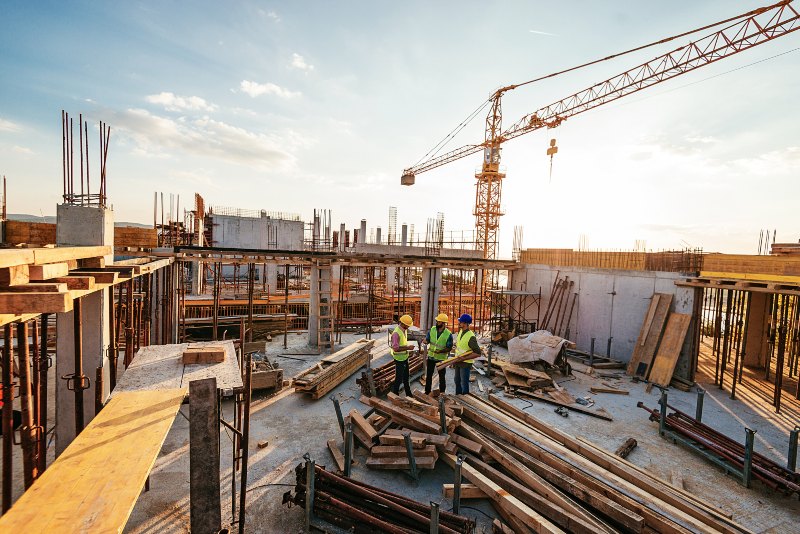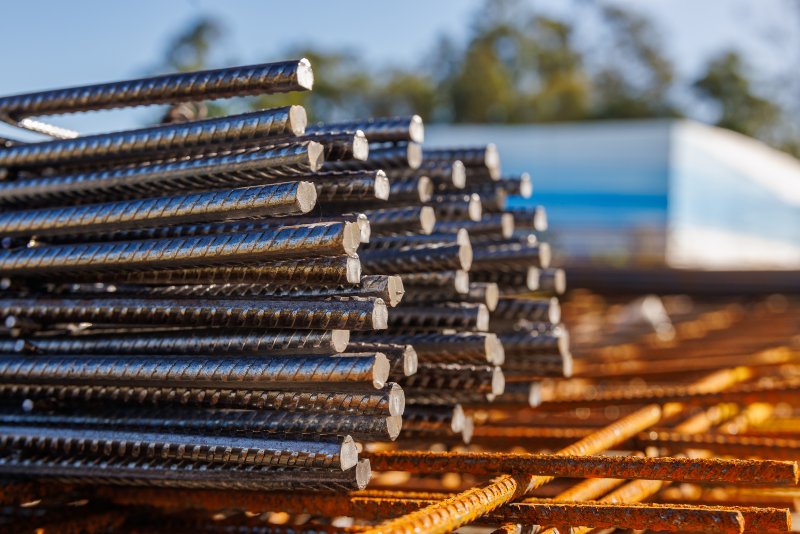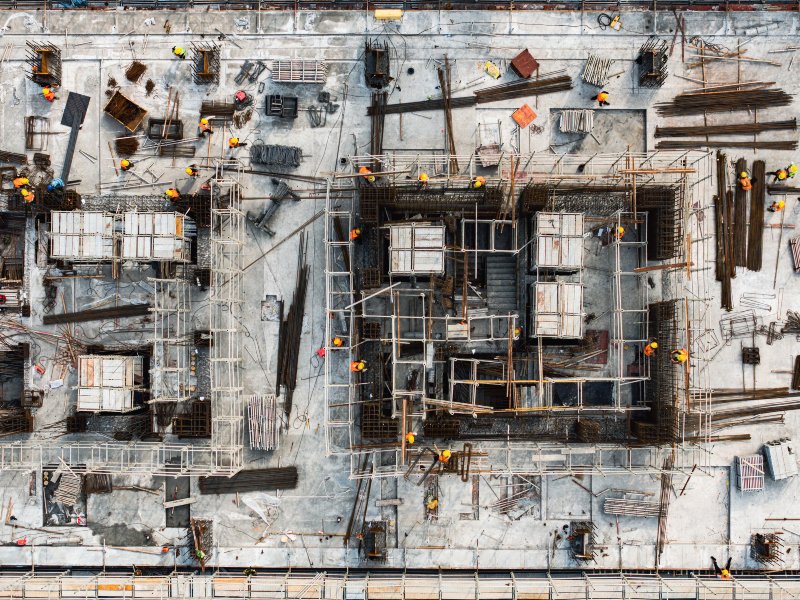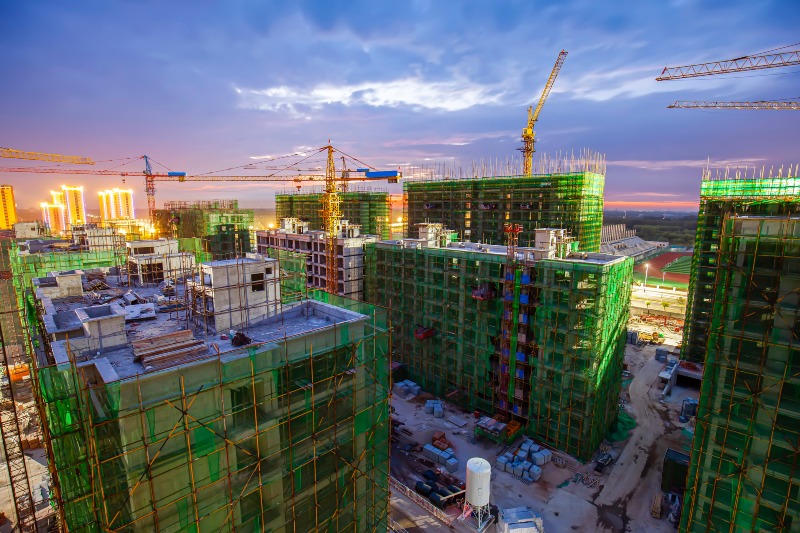Top 5 Most Common Commercial Construction Materials
Selecting the most suitable construction materials for your commercial project impacts more than just the building’s appearance or budget. It also dictates how long the structure will last, how it responds to environmental stressors, and how efficiently it operates. South Central Wisconsin, where Advanced Building Corporation operates, presents unique challenges such as harsh winters and fluctuating temperatures, choosing materials even more critical.

1. Concrete – The Backbone of Commercial Construction
Concrete is an undeniable leader in commercial construction materials. Known for its exceptional durability, strength, and versatility, it plays a foundational role in nearly every commercial project.
Key Benefits of Concrete
- Durability: Resistant to weather, fire, and insects, making it perfect for foundations and heavy-load structures.
- Versatility: Can be shaped into virtually any form, from sleek modern designs to traditional structures.
- Cost-effectiveness: A readily available material that offers longevity, saving money on repairs or replacements over time.
Applications
- Foundations and structural frameworks of high-rises or sprawling warehouses.
- Bridges, overpasses, and pavement.
- Parking structures, sidewalks, and flooring.
Fun Fact: The innovation of self-healing concrete, which uses bacteria to repair cracks, is making its way into modern construction and promises to revolutionize durability standards.
2. Steel – Strength & Versatility in Commercial Buildings
Steel is the go-to material for constructing large-scale commercial buildings because of its unmatched strength-to-weight ratio and flexibility in design. Its ability to create sleek, modern structures has made it a favorite among architects and builders.
Key Benefits of Steel
- Tensile Strength: Steel’s ability to handle heavy loads makes it ideal for skyscrapers and industrial buildings.
- Sustainability: Recyclable and eco-friendly, helping reduce the environmental impact of a construction project.
- Time Efficiency: Steel components can be prefabricated, cutting down on construction time.

Applications
- Structural frameworks for skyscrapers, factories, and stadiums.
- Roofing, staircases, and railings.
- Bridges and large-scale infrastructures like airports.
Pro Tip: Advanced construction techniques use fire-resistant coatings on steel, enhancing safety and regulatory compliance.
3. Wood – A Sustainable & Versatile Construction Material
Wood is steadily regaining its popularity in commercial construction, largely due to its eco-friendly characteristics and aesthetic appeal. Advanced engineering methods like mass timber construction allow wood to be used in large-scale commercial settings.
Key Benefits of Wood
- Sustainability: Wood is renewable, and certified sources ensure environmentally responsible harvesting.
- Aesthetic Appeal: Creates warm, inviting interiors perfect for retail spaces or restaurants.
- Versatility: Easily incorporated into both structural and decorative elements of a building.
Applications
- Framing and flooring in multi-family residential or office spaces.
- Decorative interior finishes in retail, restaurants, or educational facilities.
- Mass timber construction for durable, eco-friendly high-rises.
Did You Know? Fire-resistant treatments for wood are now highly effective, making it suitable even for buildings with strict fire safety standards.

4. Brick & Masonry – Timeless & Fire-Resistant
Brick and masonry are valued for their classic appearance, fire-resistant properties, and energy efficiency. These materials have been used for centuries and continue to play a major role in modern commercial projects.
Key Benefits of Brick & Masonry
- Fire Resistance: Highly effective at containing fire, making it ideal for safety-focused designs.
- Thermal Properties: Natural insulation helps regulate indoor temperatures, reducing energy costs.
- Aesthetic Longevity: Classic designs never go out of style, making brick facades a timeless choice.
Applications
- Load-bearing walls, facades, and decorative elements in schools, cultural centers, or retail spaces.
- Landscaping features like outdoor patios and retaining walls.
- Historical restorations to preserve architectural authenticity.
Historical Insight: Masonry techniques date back thousands of years, proving their longevity and reliability.
5. Glass – Modern Aesthetics & Energy Efficiency
Glass brings a contemporary touch to commercial buildings, boosting energy efficiency and functionality. It’s one of the most popular materials in modern design, often used for its ability to create open, sunlit spaces.
Key Benefits of Glass
- Natural Lighting: Reduces reliance on artificial light, saving energy and improving indoor ambiance.
- Energy Efficiency: Options like low-E glass and insulated glass help regulate indoor temperatures.
- Visual Appeal: Adds sleek and modern aesthetics to facades and interiors.
Applications
- Curtain walls and facades of office buildings or hotels.
- Windows, skylights, and partitions for retail or office spaces.
- Interior décor such as stair railings and tabletops.
Tech Forward: Innovations like smart glass, which adjusts transparency at the flip of a switch, are becoming increasingly affordable and practical.

Emerging Trends in Construction Materials
The commercial construction industry is at the forefront of innovation. These are some trending advancements to watch for in the near future:
- Self-healing concrete to prevent cracks and wear over time.
- Composite materials, combining the best features of steel, concrete, and other components for enhanced durability.
- Bio-based materials like bamboo and hemp, offering renewable options for eco-conscious builders.
Choosing the Right Building Construction Materials
When planning your next commercial project, it’s crucial to select materials that meet your specific needs, whether your focus is durability, sustainability, or aesthetics. Understanding your project’s requirements and location-specific challenges, such as the climate in South Central Wisconsin, ensures a successful build.
At Advanced Building Corporation, our decades of experience in designing and constructing commercial projects allow us to help you make well-informed decisions. Whether it’s office buildings, medical facilities, or retail spaces, we’ll guide you in choosing materials that maximize efficiency, safety, and visual impact.
Take the Next Step with Advanced Building Corporation
Looking for expert commercial construction solutions? At Advanced Building Corporation, our experience team specialize in design-build services for commercial projects across South Central Wisconsin. From selecting construction materials to executing your vision, we ensure exceptional results every step of the way. Contact us today for a free consultation and take the first step toward bringing your project to life.
